
- SAP Community
- Products and Technology
- Technology
- Technology Blogs by SAP
- Know more about SAP IAS SCIM APIs - Latest
Technology Blogs by SAP
Learn how to extend and personalize SAP applications. Follow the SAP technology blog for insights into SAP BTP, ABAP, SAP Analytics Cloud, SAP HANA, and more.
Turn on suggestions
Auto-suggest helps you quickly narrow down your search results by suggesting possible matches as you type.
Showing results for
Product and Topic Expert
Options
- Subscribe to RSS Feed
- Mark as New
- Mark as Read
- Bookmark
- Subscribe
- Printer Friendly Page
- Report Inappropriate Content
2022 Jul 18
4:59 PM
14,395
Dear All,
This article is mainly for partners and customers who want to automate internal & external users sync (on-boarding) to SAP IAS by using the below SCIM APIs from your external system or applications. I have listed out all the examples for you to understand..
This below flow makes you understand automating Users Sync from any of your 3rd party applications, so once user is on-boarded they would get appropriate access to SAP Applications
This below flow makes you understand automating Users Sync from any of your 3rd party applications, so once user is on-boarded they would get appropriate access to SAP Applications
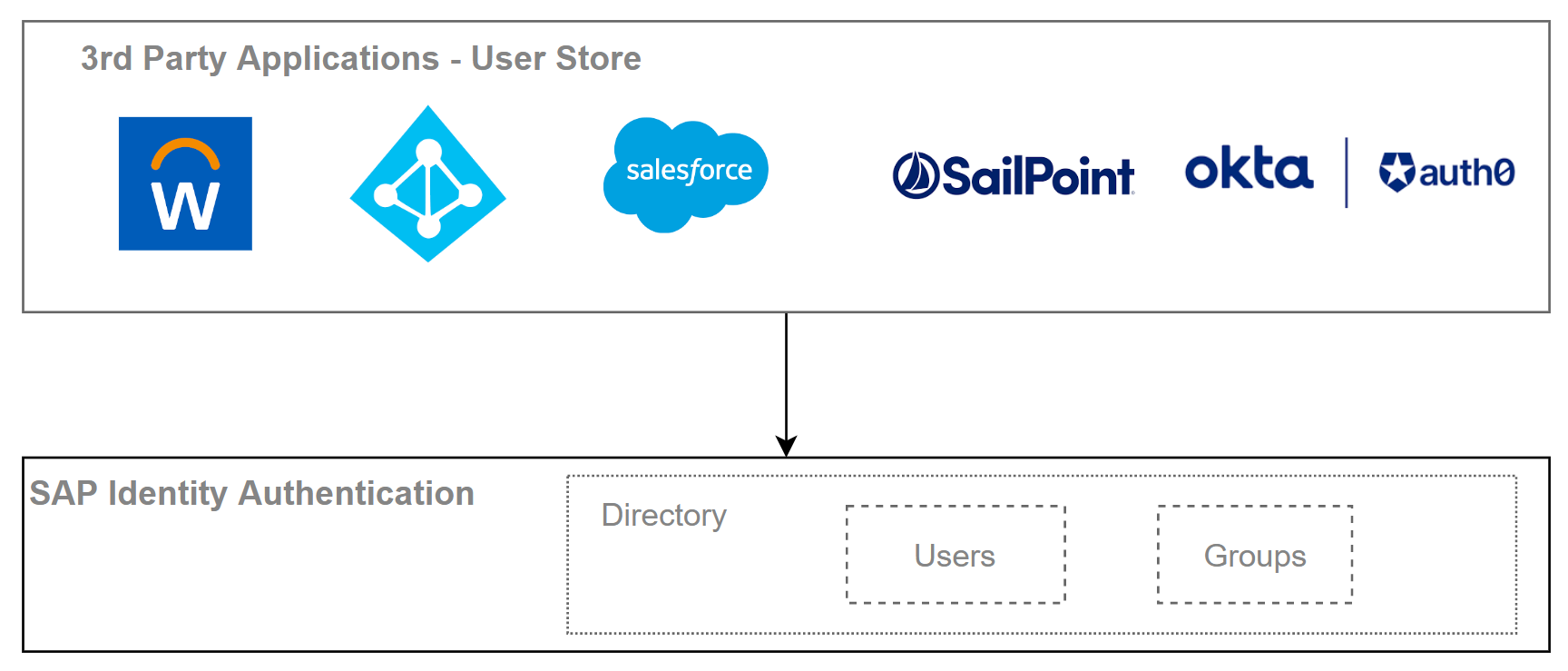
Note :SAP Cloud Identity Services offers standard user provisioning sync through SAP IPS for user sync process with SCIM 2.0 |
IAS SCIM REST API provides developers to Create & Manage users, groups and custom schemas in the cloud.
For more information, see the latest SCIM API Documentation: Identity Directory SCIM REST API The identity directory provides a System for Cross-domain Identity Management (SCIM) 2.0 REST API for managing resources (users, groups and custom schema)
The identity directory provides a System for Cross-domain Identity Management (SCIM) 2.0 REST API for managing resources (users, groups and custom schema)
 The identity directory provides a System for Cross-domain Identity Management (SCIM) 2.0 REST API for managing resources (users, groups and custom schema)
The identity directory provides a System for Cross-domain Identity Management (SCIM) 2.0 REST API for managing resources (users, groups and custom schema) API Documentation for SAP IAS is available under SAP Cloud Identity Services
API Documentation for SAP IAS is available under SAP Cloud Identity Services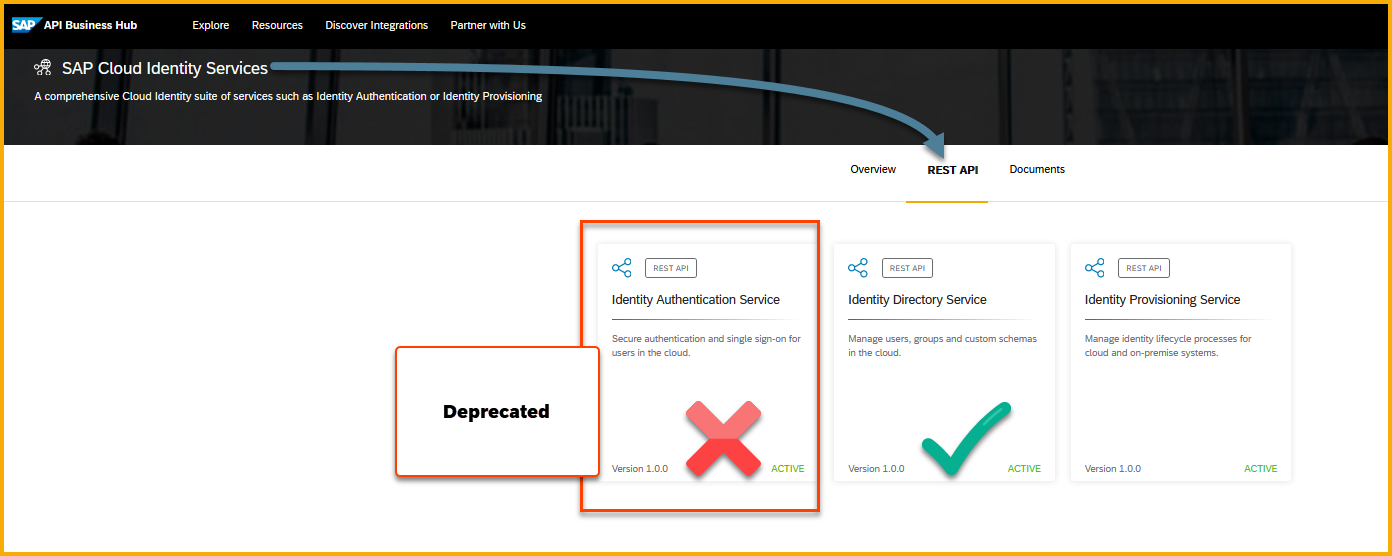
Get's Started
Read Users
### https://api.sap.com/api/IdDS_SCIM/resource Identity Directory Service
GET https://<iastenant>.accounts.ondemand.com/scim/Users
Content-Type: application/scim+json
Authorization: Basic @{{token}}
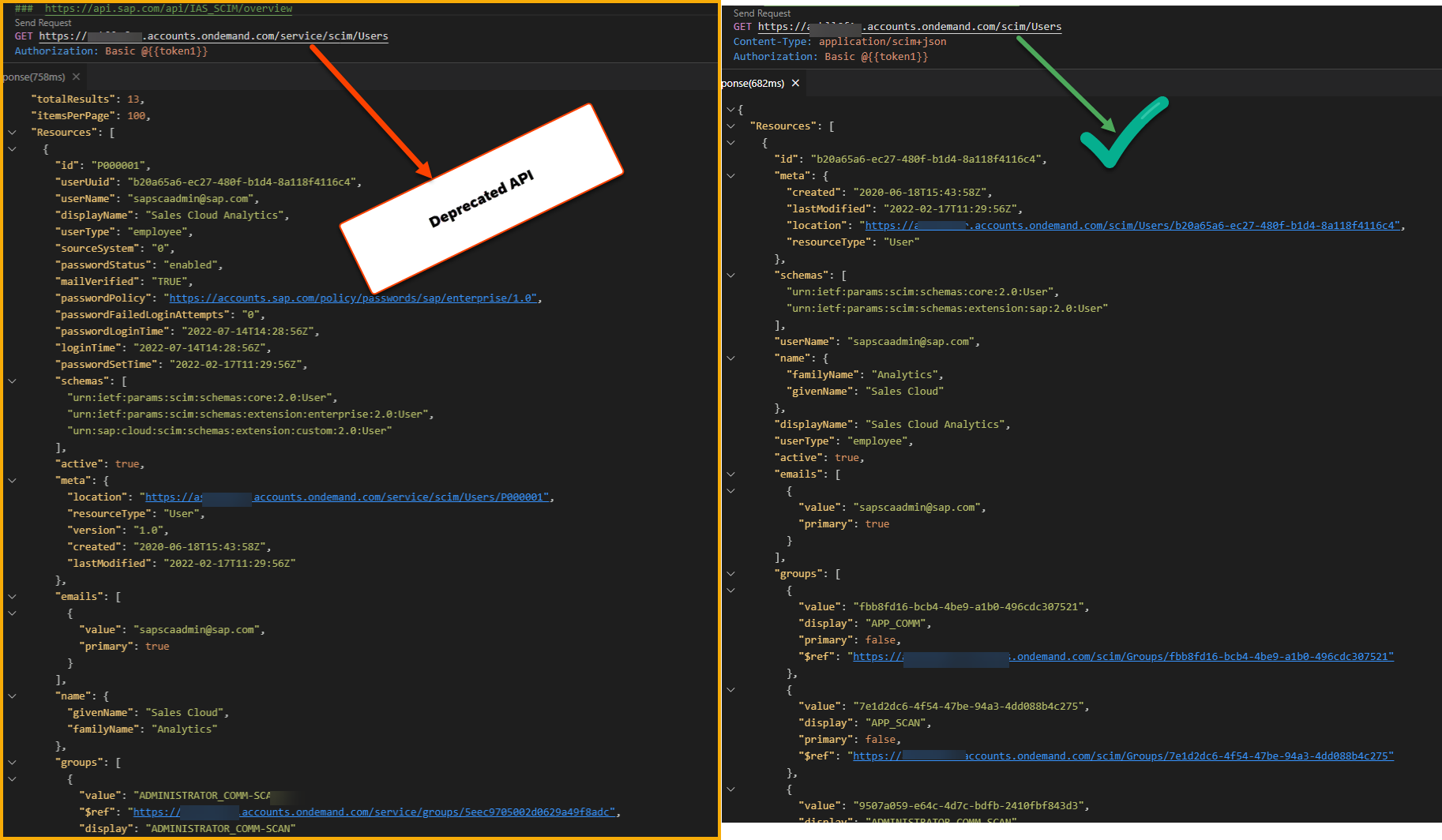
This is how you compare 2 different results from Deprecated API endpoint vs latest API endpoint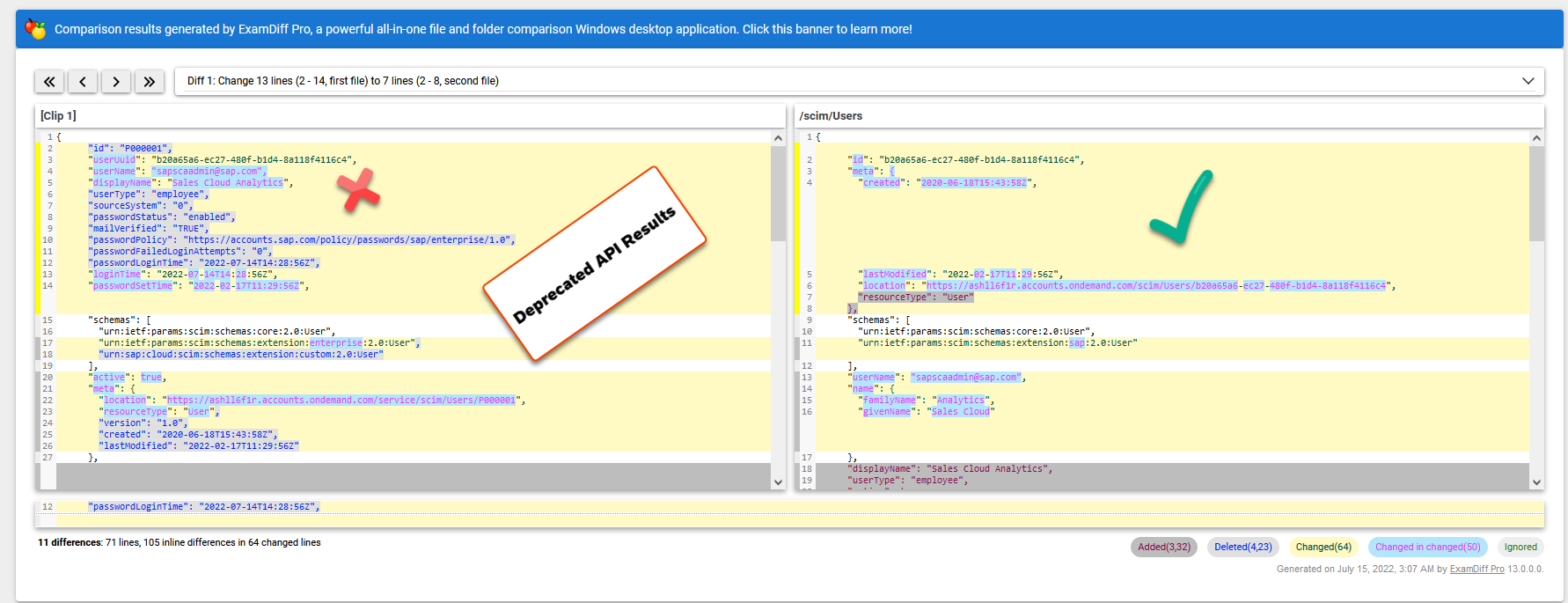
Filter Method
#### Filter on userName
GET https://<iastenant>.accounts.ondemand.com/scim/Users?filter=userName eq "sapscaadmin@sap.com"
Authorization: Basic @{{token}}
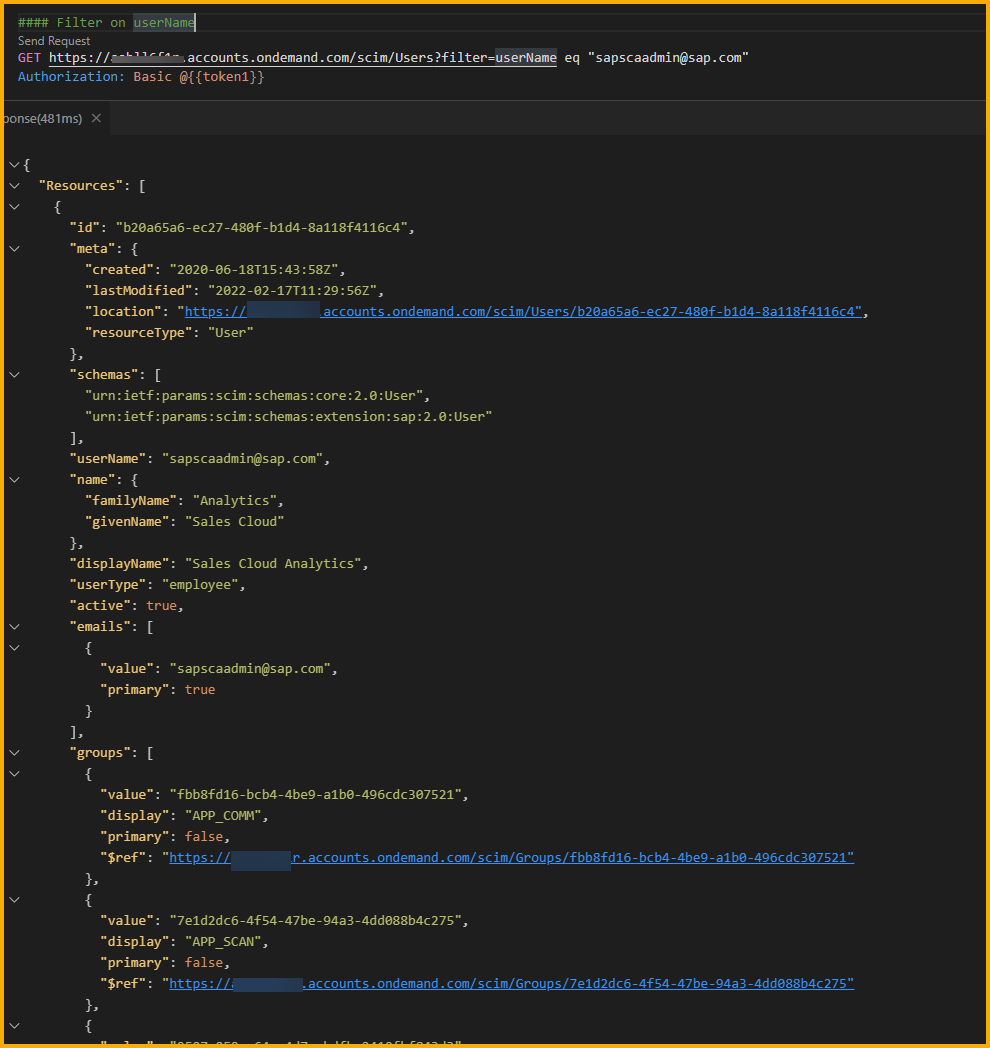
Another example using sub filter on Json value
#### Filter on emails.value
GET https://<iastenant>.accounts.ondemand.com/scim/Users?filter=emails.value eq "sapscaadmin@sap.com"
Authorization: Basic @{{token}}

Another example to filter Users based on count and Index
### https://api.sap.com/api/IdDS_SCIM/resource Identity Directory Service
GET https://<iastenant>.accounts.ondemand.com/scim/Users?startIndex=2&count=5
Content-Type: application/scim+json
Authorization: Basic @{{token}}

Create User
###
POST https://<iastenant>.accounts.ondemand.com/scim/Users
Content-Type: application/scim+json
Authorization: Basic @{{token}}
{
"emails": [
{
"primary": true,
"value": "abc@domain.com"
}
],
"active":"True",
"name": {
"familyName": "Muthaiah",
"givenName": "Yogananda"
},
"schemas": [
"urn:ietf:params:scim:schemas:core:2.0:User"
],
"userName": "yoga"
}
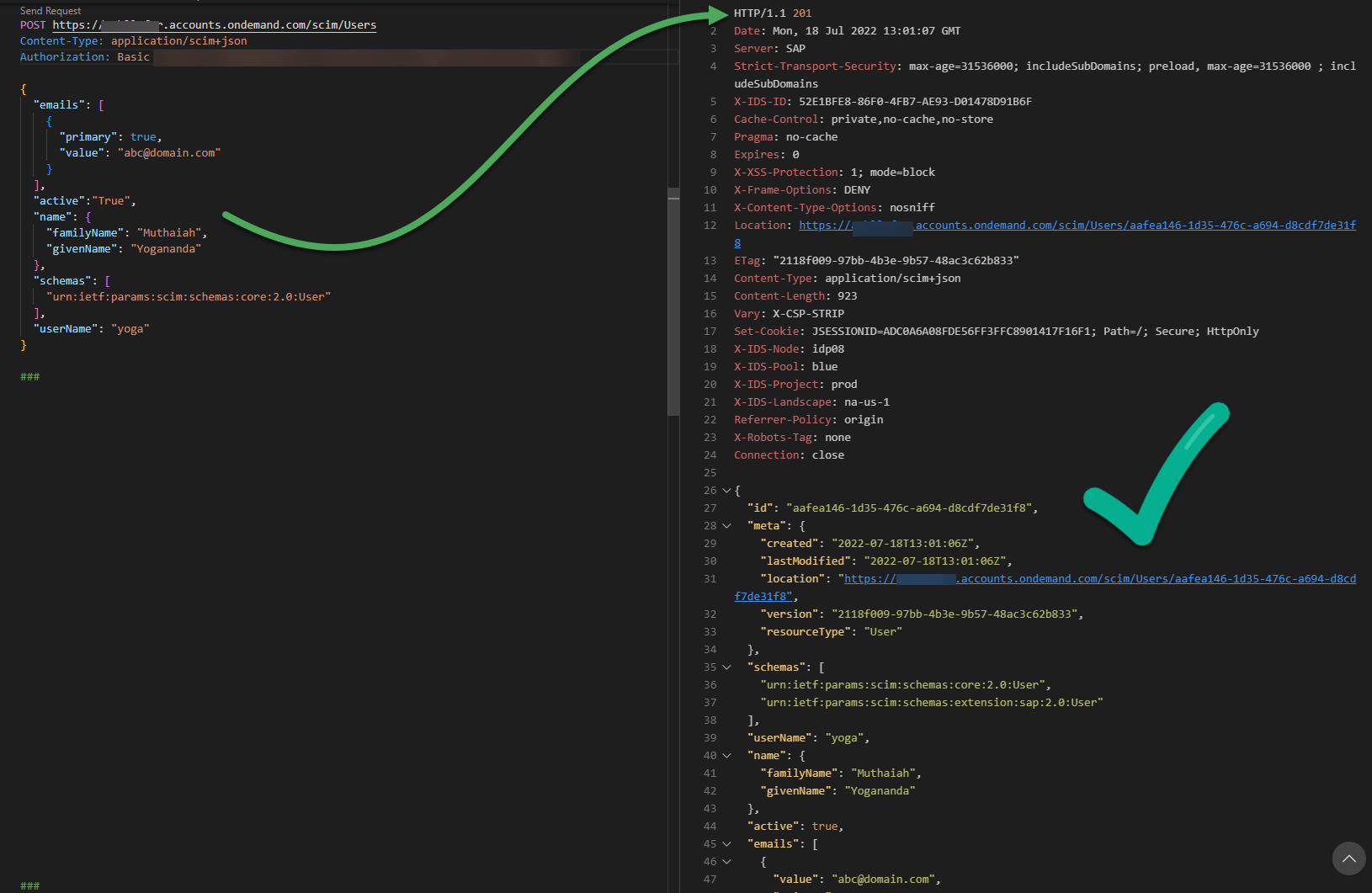
Delete a User
#### Delete the user
DELETE https://<iastenant>.accounts.ondemand.com/scim/Users/280b8446-7ce2-4a91-b6a0-18777d1ffea2
Authorization: Basic @{{token}}
id refers Users GUID
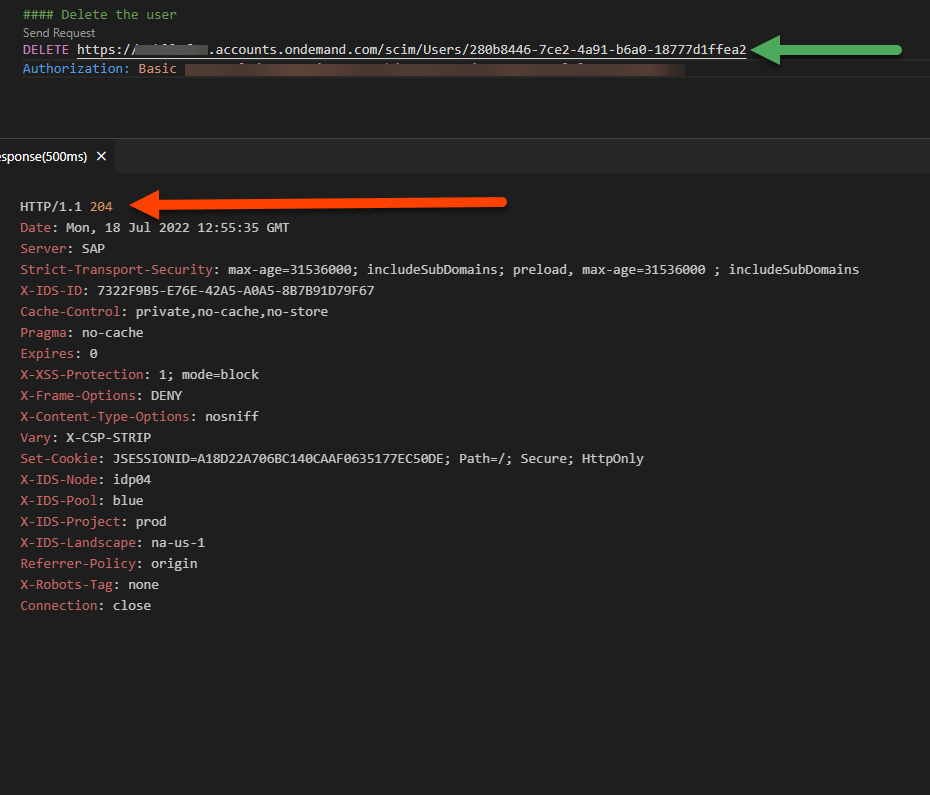
Read Groups
###
GET https://<iastenant>.accounts.ondemand.com/scim/Groups
Content-Type: application/scim+json
Authorization: Basic @{{token}}
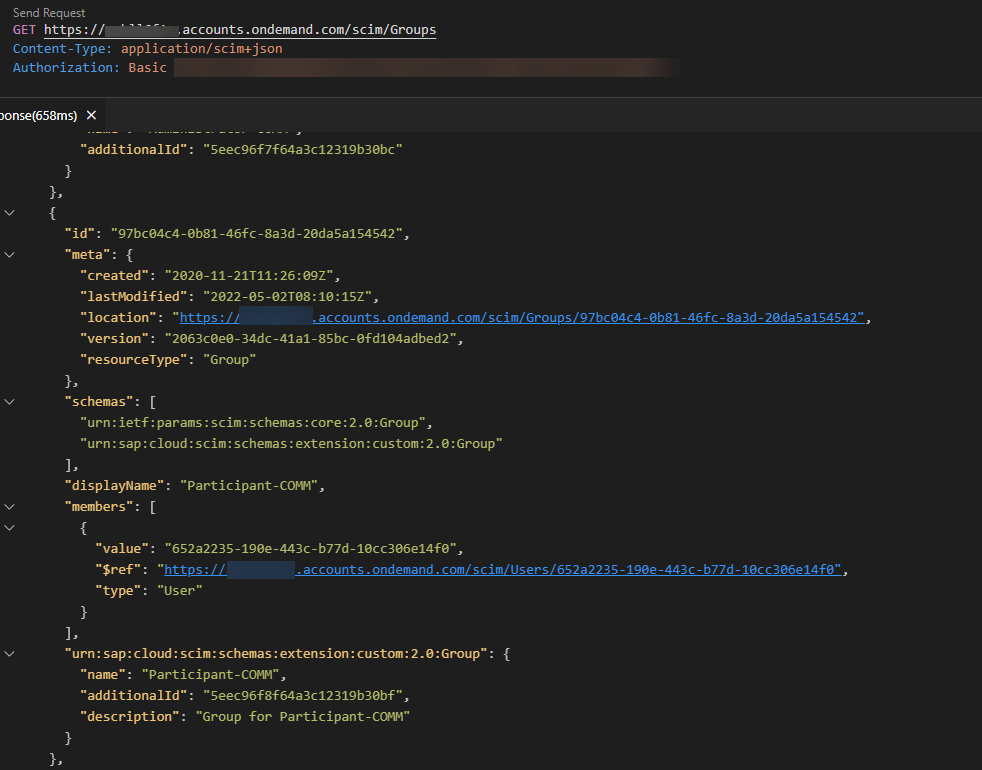
Create Groups
###
POST https://<iastenant>.accounts.ondemand.com/scim/Groups
Content-Type: application/scim+json
Authorization: Basic @{{token}}
{
"displayName": "New group name",
"schemas": [
"urn:ietf:params:scim:schemas:core:2.0:Group",
"urn:sap:cloud:scim:schemas:extension:custom:2.0:Group"
]
}

Assign Group to a User
###
PATCH https://<iastenant>.accounts.ondemand.com/scim/Groups/e26f6138-c382-4be5-addb-459186030f6e
Content-Type: application/scim+json
Authorization: Basic @{{token}}
{
"schemas": [
"urn:ietf:params:scim:api:messages:2.0:PatchOp"
],
"Operations": [
{
"op": "add",
"path": "members",
"value": [
{
"display": "yoga",
"value": "280b8446-7ce2-4a91-b6a0-18777d1ffea2"
}
]
}
]
}

Labels:
26 Comments
You must be a registered user to add a comment. If you've already registered, sign in. Otherwise, register and sign in.
Labels in this area
-
ABAP CDS Views - CDC (Change Data Capture)
2 -
Advanced Event Mesh
1 -
ai
1 -
Analyze Workload Data
1 -
BS Reclassification
1 -
BTP
1 -
Business and IT Integration
2 -
Business application stu
1 -
Business Technology Platform
1 -
Business Trends
1,657 -
Business Trends
210 -
CAP
1 -
cf
1 -
Characteristics display
1 -
Classes
1 -
Cloud Foundry
1 -
Confluent
1 -
Customer COE Basics and Fundamentals
1 -
Customer COE Latest and Greatest
3 -
Customer Data Browser app
1 -
Data Analysis Tool
1 -
data migration
1 -
data transfer
1 -
Databricks
1 -
Datasphere
2 -
Event Information
1,396 -
Event Information
168 -
Expert
1 -
Expert Insights
178 -
Expert Insights
742 -
General
2 -
Getting Started
2 -
Google cloud
1 -
Google Next'24
1 -
GraphQL
1 -
Introduction
1 -
Kafka
1 -
Life at SAP
779 -
Life at SAP
43 -
MDG materials
1 -
MDGM
1 -
Migrate your Data App
1 -
MLFlow
1 -
MTA
1 -
Network Performance Analysis
1 -
NodeJS
1 -
PDF
1 -
POC
1 -
Product Updates
4,562 -
Product Updates
808 -
Replication Flow
1 -
REST API
1 -
RisewithSAP
1 -
SAP BTP
1 -
SAP BTP Cloud Foundry
1 -
SAP Cloud ALM
1 -
SAP Cloud Application Programming Model
2 -
SAP Datasphere
2 -
SAP Datasphere تحقيق أقصى استفادة من بيانات الأعمال
1 -
SAP MDG Data Quality Management
1 -
SAP MDG DQM
1 -
SAP s4hana cloud
1 -
SAP S4HANA Migration Cockpit
1 -
Technical article
1 -
Technology Updates
6,864 -
Technology Updates
978 -
Workload Fluctuations
1
Related Content
- SAP UI Test Automation is Dead as it’s Too Slow - Part Two in Technology Blogs by Members
- SAP NWBC Error in Technology Q&A
- Steps for Extracting Data from SAP Digital Manufacturing Cloud via API in Technology Q&A
- Transport selected artefact to Cloud Transport Management service using Content Agent UI in Technology Blogs by SAP
- Step by Step guide to creating remote data in HDI in Technology Blogs by SAP
Top kudoed authors
| User | Count |
|---|---|
| 11 | |
| 11 | |
| 11 | |
| 10 | |
| 10 | |
| 8 | |
| 8 | |
| 7 | |
| 6 | |
| 6 |